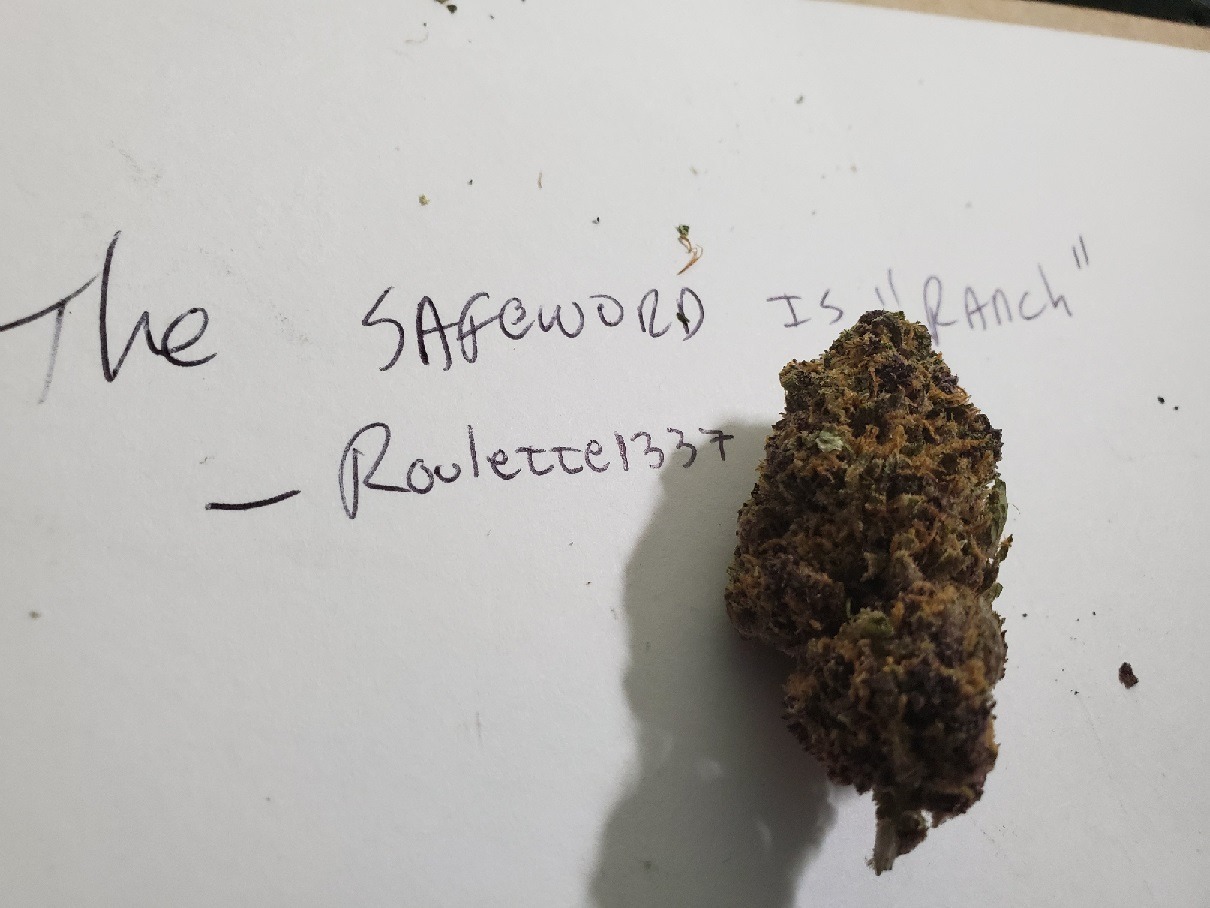|
Sunday, 8 December 2019
quote [ The District of Columbia and 11 states -- Alaska, California, Colorado, Illinois, Maine, Massachusetts, Michigan, Nevada, Oregon, Vermont and Washington -- have adopted the most expansive laws legalizing marijuana for recreational use. How's everything going for any that happen to live there? Any SE'ers in countries that have been pot-legal for decades - what has changed the most over the years? ]
I know when California started the process and finally passed it, there were horror stories about distribution, price and supply that just flat out did not happen. I picked up the thumb (more in extended) yesterday in less than 5 minutes, in and out.
I'm kind of a connoisseur, and am especially picky about my Indicas. I picked up this little nug in California. For those who were not raised on Cali-Bud, let's just say that the state has always had some of the most kind smoke (especially the flowers,) around the world. The best flowers come from the northern coastal region (Humboldt, Crescent City, etc.)
This is a strain called "Forbidden Fruit." It is a 70/30 hybrid is made by crossing two extremely flavorful strains named Cherry Pie and Tangie. In the container, it has a very strong "cherry smell" as opposed to that "skunky" fragrance that Cali-Bud is famous for. While smoking it, I noticed it has a very good "no cough" effect, and despite the strong flower smell, has no lingering aftertaste. -  - Elapsed time from when I walked through the door, and walked out with this, and 5 other strains (xmas presents yo!) was 2 minutes wait time, plus 10 minutes actual "shopping" time including checkout. Absolutely none of the nightmare scenarios from the "never legalize-it's" about distribution, price, supply, ever happened. Actually, in the almost 2 years that the doors swung open for official recreational use, the novelty has worn off, and there are less people in line, coupled with the shops learning how to handle the shoppers more efficiently. Just curious as to how it is going in the other recreational-use states. Would love to hear from anyone around the world from countries that are pot-legal as well. Of course, any other "connoisseurs" or fellow rec-users just want to compare notes that would be awesome too.
|
Space_1889 said @ 5:33pm GMT on 9th December
You can grow up to four plants at home as long as you are over 21. You can't legally make concentrates at home, though.
Yes, cross-pollination is a problem, as is getting quality seed that germinates and produces the right crop. It's kind of the Wild West right now in terms of commercial growing of hemp. A big issue is that it is an easy crop to grow in Oregon, so lots of people got into it and the supply chain has not kept up. I'd expect this to work itself out in the next few years as the agricultural supply companies and Oregon State University's extension service get involved with quality control and improved growing methods.
I have not seen any reporting on crime rates, so no idea on what is going on there, nor on drug substitution. One thing I do know is that Oregon is not taxing weed as much as California does, plus there is is huge weed surplus here, so legal prices are low and that is crowding out the illegal market.
The other major crime impact is more smuggling of weed out of Oregon, particularly bulk shipments. Folks can get a much higher price outside Oregon, so some of the legal weed is getting illegally diverted to out-of-state shipments.
What is interesting is that the overall use of marijuana as a percentage of the population seems not to have gone up that much. In part that is because we had a pretty liberal set of medical marijuana laws well before recreational marijuana was legalized, so if you wanted marijuana you could pretty easily get a medical card and buy the stuff. The big change seems to be greater selection and lower prices.
As to your overall question about unintended consequences, the big one that folks did not seem to anticipate was the massive overproduction (over a million pounds surplus earlier this year - that's about a six-year supply). Unlike Colorado, which carefully regulated and restricted growers, Oregon took a more hands-off approach. As a result, people saw it as easy money, and are now losing their shirts. The legislature actually changed the licensing law for growers this year to put greater restrictions in the hopes of reducing the oversupply.
The biggest impact is on small growers and folks who were enthusiasts and growers before legalization. They are the ones least likely to have deep pockets, and so are going to get squeezed out due to the surplus.
One other impact of legalization is conflict between neighbors. Folks who grow at home, and many commercial operations, often have their plants outdoors, and the smell can get pretty bad and bother folks who live nearby.
As I said in my previous post, the best policy change would be federal legalization. Oregon and Northern California are great places to grow marijuana. In contrast, a lot of the weed grown in Colorado is raised in indoor grow operations that are very energy-intensive - I've seen some estimates that, even with transport costs, West Coast weed would put most Colorado growers out of business if interstate trade was allowed.
Space_1889 said @ 5:36pm GMT on 9th December
You can grow up to four plants at home as long as you are over 21. You can't legally make concentrates at home, though.
Yes, cross-pollination is a problem, as is getting quality seed that germinates and produces the right crop. It's kind of the Wild West right now in terms of commercial growing of hemp. A big issue is that it is an easy crop to grow in Oregon, so lots of people got into it and the supply chain has not kept up. I'd expect this to work itself out in the next few years as the agricultural supply companies and Oregon State University's agricultural extension service get involved with quality control and improved growing methods.
I have not seen any reporting on crime rates, so no idea on what is going on there, nor on drug substitution. One thing I do know is that Oregon is not taxing weed as much as California does, plus there is is huge weed surplus here, so legal prices are low and that is crowding out the illegal market.
The other major crime impact is more smuggling of weed out of Oregon, particularly bulk shipments. Folks can get a much higher price outside Oregon, so some of the legal weed is getting illegally diverted to out-of-state shipments.
What is interesting is that the overall use of marijuana as a percentage of the population seems not to have gone up that much. In part that is because we had a pretty liberal set of medical marijuana laws well before recreational marijuana was legalized, so if you wanted marijuana you could pretty easily get a medical card and buy the stuff. The big change seems to be greater selection and lower prices.
As to your overall question about unintended consequences, the big one that folks did not seem to anticipate was the massive overproduction (over a million pounds surplus earlier this year - that's about a six-year supply). Unlike Colorado, which carefully regulated and restricted growers, Oregon took a more hands-off approach. As a result, people saw it as easy money, and are now losing their shirts. The legislature actually changed the licensing law for growers this year to put greater restrictions in the hopes of reducing the oversupply.
The biggest impact is on small growers and folks who were enthusiasts and growers before legalization. They are the ones least likely to have deep pockets, and so are going to get squeezed out due to the surplus.
One other impact of legalization is conflict between neighbors. Folks who grow at home, and many commercial operations, often have their plants outdoors, and the smell can get pretty bad and bother folks who live nearby.
As I said in my previous post, the best policy change would be federal legalization. Oregon and Northern California are great places to grow marijuana. In contrast, a lot of the weed grown in Colorado is raised in indoor grow operations that are very energy-intensive - I've seen some estimates that, even with transport costs, West Coast weed would put most Colorado growers out of business if interstate trade was allowed.
<-- Entry / Current Comment
Space_1889 said @ 5:33pm GMT on 9th December [Score:1 Informative]
You can grow up to four plants at home as long as you are over 21. You can't legally make concentrates at home, though.
Yes, cross-pollination is a problem, as is getting quality seed that germinates and produces the right crop. It's kind of the Wild West right now in terms of commercial growing of hemp. A big issue is that it is an easy crop to grow in Oregon, so lots of people got into it and the supply chain has not kept up. I'd expect this to work itself out in the next few years as the agricultural supply companies and Oregon State University's agricultural extension service get involved with quality control and improved growing methods.
I have not seen any reporting on crime rates, so no idea on what is going on there, nor on drug substitution. One thing I do know is that Oregon is not taxing weed as much as California does, plus there is is huge weed surplus here, so legal prices are low and that is crowding out the illegal market.
The other major crime impact is more smuggling of weed out of Oregon, particularly bulk shipments. Folks can get a much higher price outside Oregon, so some of the legal weed is getting illegally diverted to out-of-state shipments.
What is interesting is that the overall use of marijuana as a percentage of the population seems not to have gone up that much. In part that is because we had a pretty liberal set of medical marijuana laws well before recreational marijuana was legalized, so if you wanted marijuana you could pretty easily get a medical card and buy the stuff. The big change seems to be greater selection and lower prices.
As to your overall question about unintended consequences, the big one that folks did not seem to anticipate was the massive overproduction (over a million pounds surplus earlier this year - that's about a six-year supply). Unlike Colorado, which carefully regulated and restricted growers, Oregon took a more hands-off approach. As a result, people saw it as easy money, and are now losing their shirts. The legislature actually changed the licensing law for growers this year to put greater restrictions in the hopes of reducing the oversupply.
The biggest impact is on small growers and folks who were enthusiasts and growers before legalization. They are the ones least likely to have deep pockets, and so are going to get squeezed out due to the surplus.
One other impact of legalization is conflict between neighbors. Folks who grow at home, and many commercial operations, often have their plants outdoors, and the smell can get pretty bad and bother folks who live nearby.
As I said in my previous post, the best policy change would be federal legalization. Oregon and Northern California are great places to grow marijuana. In contrast, a lot of the weed grown in Colorado is raised in indoor grow operations that are very energy-intensive - I've seen some estimates that, even with transport costs, West Coast weed would put most Colorado growers out of business if interstate trade was allowed.

